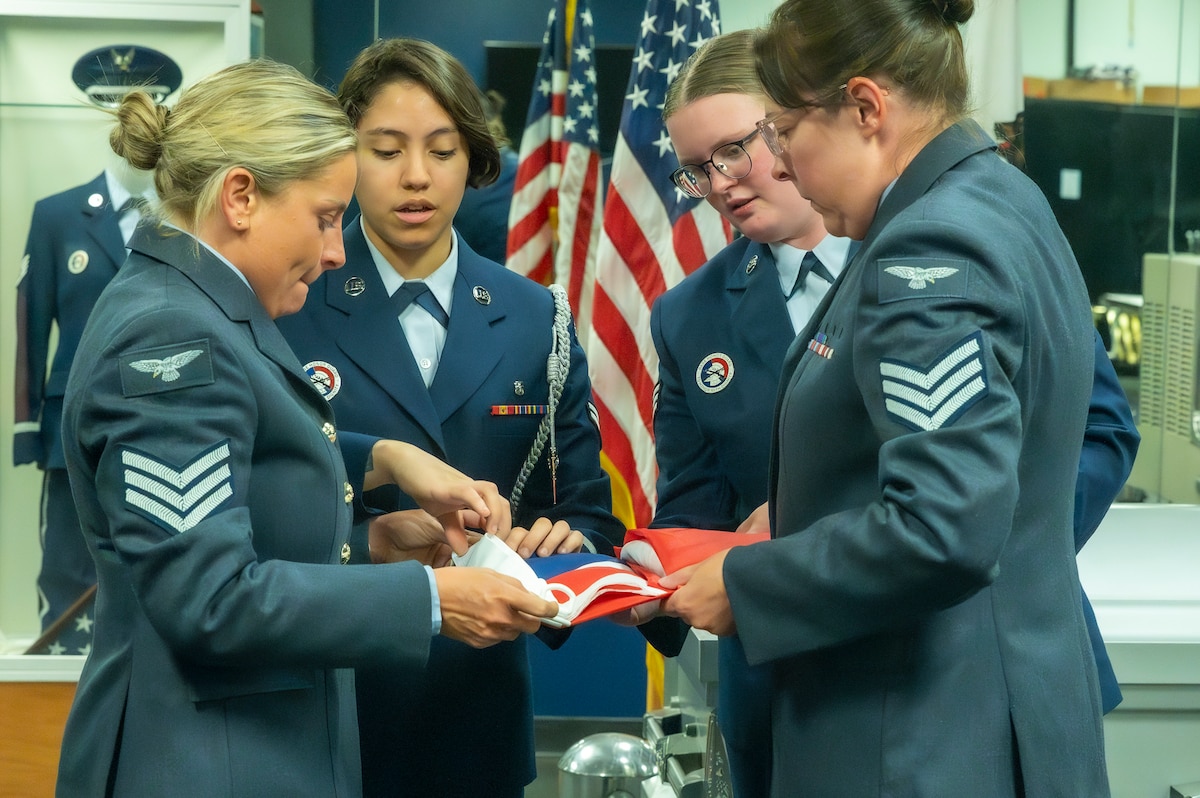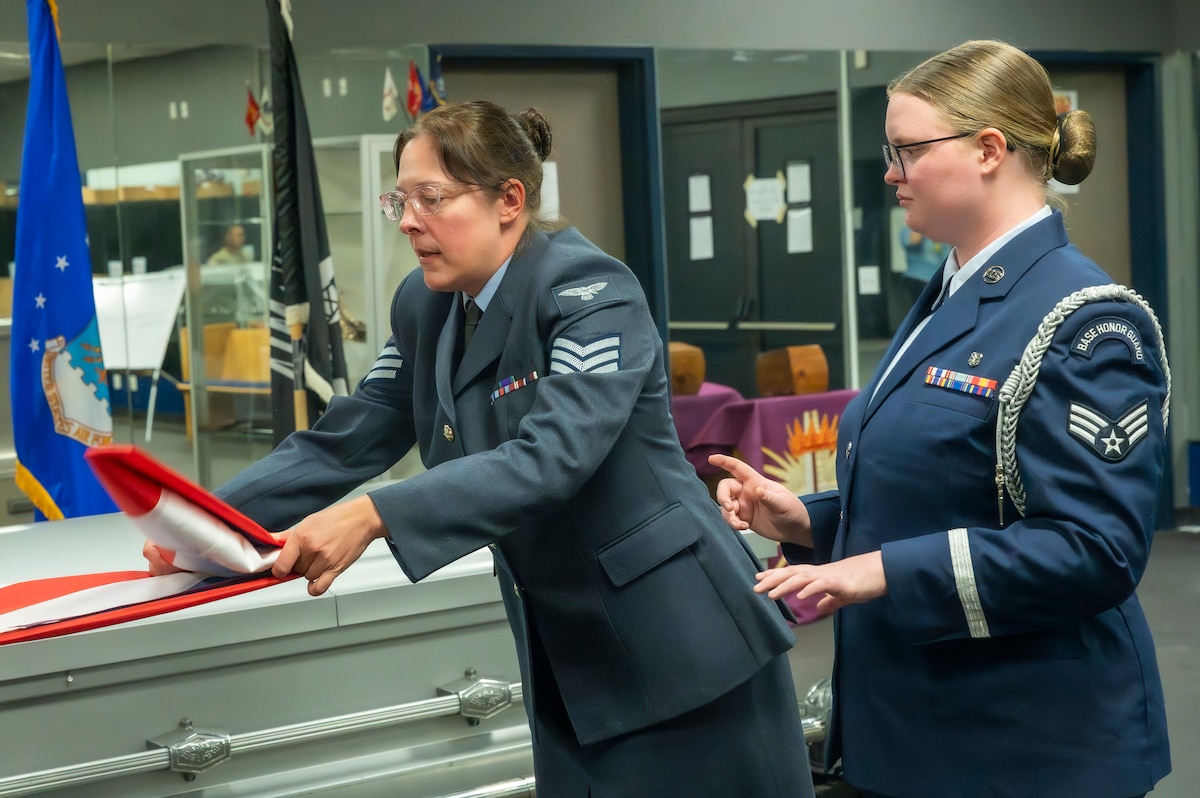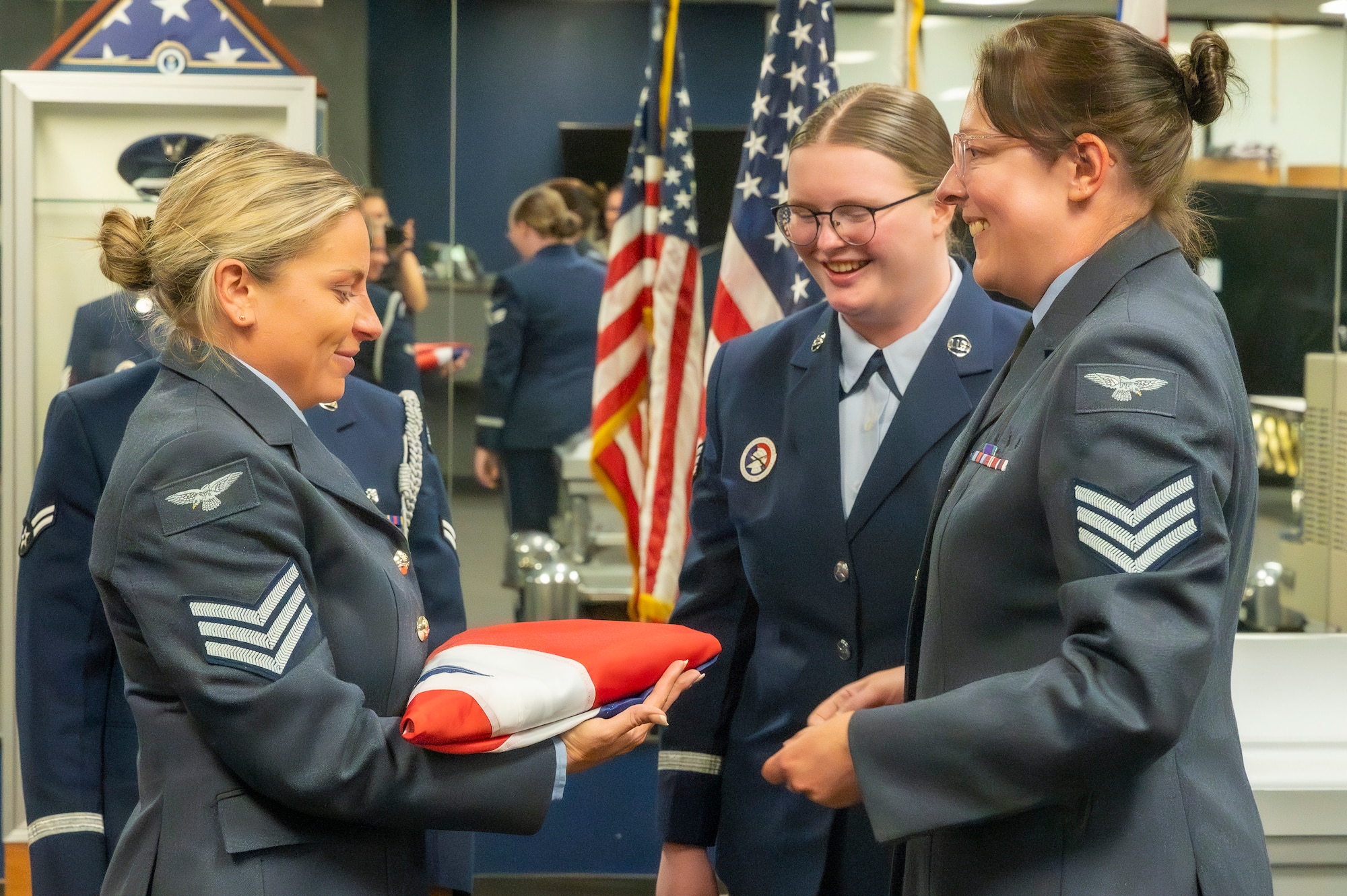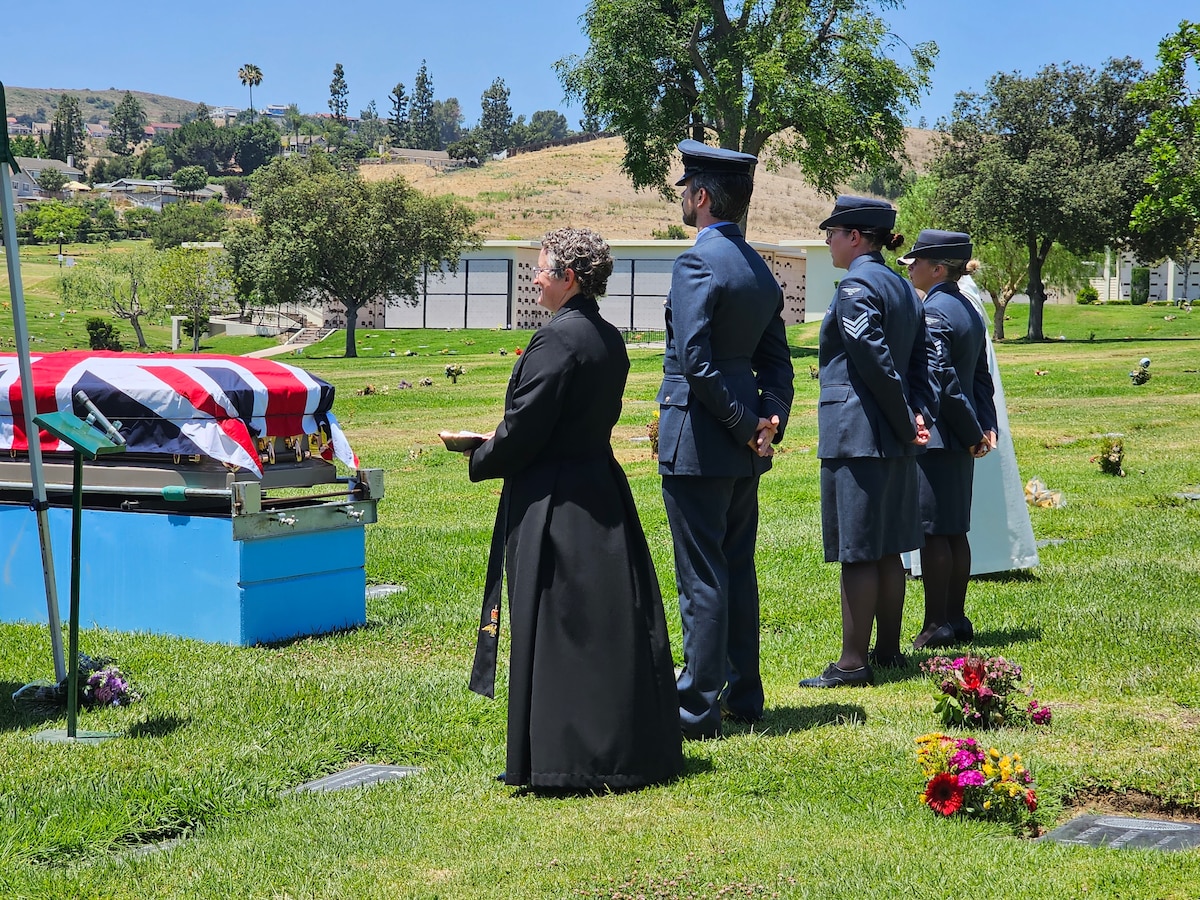EDWARDS AIR FORCE BASE —
The Blue Eagles Honor Guard from Edwards Air Force Base was the first of its kind to provide support to a recently deceased British Allied veteran of World War II.
The Blue Eagles trained two members of the Royal Air Force to properly conduct a flag folding ceremony in honour of Stella Brecht, who had served as a radar technician and mechanic in the RAF’s Women’s Auxiliary Air Force during World War II.

“I studied the British regulations on folding the flag and obtained a recording of the British version of Tattoo, the ‘Last Post,’ to understand the similarities and differences. The folding of the flag is almost identical, except it is done in the opposite direction,” said Tech. Sgt. Derek Day, who leads the Edward’s Blue Eagles Honor Guard program.
Brecht lived in Whittier, California, about 100 miles south of Edwards Air Force Base, the current location of the Royal Air Force’s 17th Test and Evaluation Squadron. The stars seemed to align and the family’s wish was granted.
Senior Airman Kendall Waterfield and Airman 1st Class Nathalia Batista da Silva of Edwards Blue Eagles Honor Guard trained Sergeant Karina Fernandez and Sergeant Rachel Douglas of the Royal Air Force in the technique of flag folding.
“It was a great opportunity and a real privilege to work with our allies,” said Batista da Silva.

They met the family at Queen of Heaven Cemetery & Mortuary in Rowland Heights, California, and helped to honor and lay to rest Brecht. Reverend (Squadron Leader) Alice McDermott, Chaplain, British Forces (USA), and Warrant Officer Engineering Anthony Fisher, Royal Navy, were also in attendance.
“As a Royal Air Force Chaplain, it was an honour to be involved in honouring our veteran Stella, even though her funeral took place far from the UK where she served her King and country in World War II,” said McDermott.
Brecht was born and raised in England. When World War II began, she was only 15 years old. She worked in a factory’s chemical lab, reinforcing aluminum for fighter planes. At 17, she joined the Women’s Auxiliary Air Force, a branch of the British Royal Air Force, as a radar technician and mechanic. On D-Day, June 6, 1944, when Allied forces – American, British, Canadian and French – invaded Normandy to fight the Nazi occupation, she was working in an underground bunker. Signals from planes flying overhead overloaded her radars.
Brecht married a US Army Air Corps soldier stationed in England and had a son with him. When the war was over, they sailed across the Atlantic to the USA on the Queen Mary and settled in Fresno, California.
“As a female officer in the RAF, I am always grateful to those who were in the WAAF and shaped the beginning of our journey, particularly as they did so at such a difficult time. I am pleased that we were able to ensure RAF representation at the funeral. It is important that we recognise and celebrate the lives of those who served in the RAF,” wrote Air Commodore Nikki Thomas, OBE Air and Space Attaché, British Defence Personnel at the British Embassy, in a letter of condolence to Brecht’s daughter.




